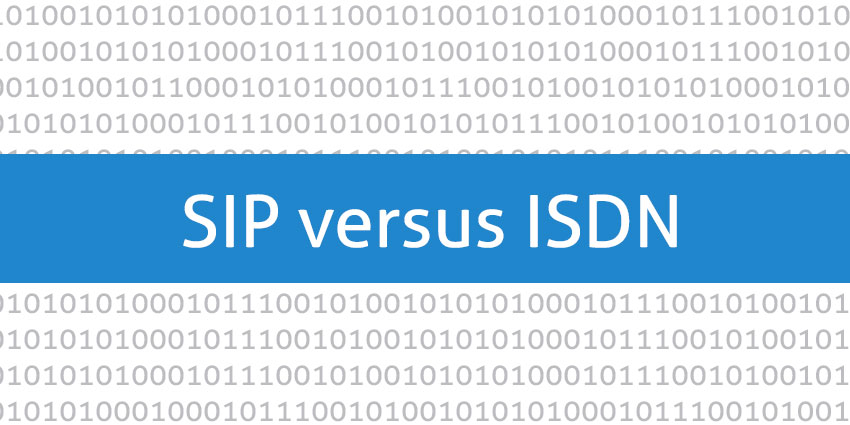SIP trunking is a method of telephony that’s growing more popular in the world of business. SIP trunks connect your premises instantly to the PSTN (Public Telephone Network), via your IP address. Usually, it can represent a great replacement for ISDN, and has become the perfect medium for VoIP telephony, thanks to its cost-saving, flexible, scalable, and reliable nature.
Today, more businesses across the UK are realising the benefits of SIP trunking instead of ISDN. Not so long ago, Illume reported that around 1,224,773 SIP channels had been added to the market in a period of only 6 months. So, what makes SIP such a useful alternative to ISDN?
SIP versus ISDN – is it Cost Effective?
Though every telephony company is sure to tell you that their services can save you cash, SIP trunks really can minimise your expenses. IP connections cost less than traditional ISDN lines in terms of rental, and in some cases, it’s possible to obtain free UK calls using SIP trunking. Of course, when you’re comparing SIP to ISDN, it’s important to note that cheap doesn’t always mean better. If you want to get the best results, you need to consider other factors such as connectivity and customer support when choosing a service provider.
SIP is Ideal for UC
If you’re interested in combining your communications needs through a seamless strategy, perhaps using voicemail, instant messaging, email, video conferencing, and more, in a single solution, then SIP trunking could be the solution. A SIP trunk allows users to control multiple numbers and unique IDs regardless of the network they’re using. With SIP your phone system can communicate directly with the public network, and mobile apps can connect back to the system too. SIP enables greater device integration, and simpler access to the cloud.
SIP is Highly Flexible and Scalable
One of the biggest benefits of SIP is that it’s very easy to scale up or down depending on the needs of your business. This is very important to companies that are anticipating a great period of growth. The option for instantaneously adding on additional trunks as required is what makes SIP trunking such a benefit over standard ISDN. Additionally, SIP is very versatile, which is great for companies that are considering moving business premises and want to maintain their existing number structure. What’s more, if your business operates across numerous sites, then you might need to have existing ISDN connections at each site. However, with SIP, it can be much easier to reduce the amount of connections you need, minimising cost!
SIP makes Connectivity Easy
SIP trunking relies heavily on connectivity, which means that you need to understand the bandwidth required for your business to be successful. Dedicated connectivity for voice is usually the best way to ensure reliability. However, if you’re a company that relies on seasonal changes, then SIP could help to boost your sales strategies. For instance, with SIP trunking, you can plan and accommodate for seasonality changes and upgrade your telephony structure to make sure you can cope. Unlike with ISDN, you can increase or decrease your SIP channels as you need to with absolute flexibility.
SIP is Resilient and Secure
Although there’s been some concern about the security of SIP trunks, and some companies have noted their anxieties about fraud, it’s important to remember that when implemented correctly, SIP is still very secure. A well-integrated SIP channel should help you to manage your connectivity through a range of security features such as firewalls and protected routers.
Additionally, you can be more resilient as a business with SIP, having robust disaster recovery plans in place. After all, with SIP you can easily move or divert fixed lines without expensive costs for call forwarding. What’s more, diverting is possible instantly, which means that your business operations aren’t affected in the event of a disaster. With IDSN and other solutions, you’d need to wait up to 24 hours for diversions to kick in!
SIP Might not be Compatible with Everything
Despite its obvious benefits, it’s important to remember that some of the providers offering SIP trunking services today may not be compatible with your existing hardware. If you’ve already invested in costly PBX equipment, then you’ll need to check your compatibility with the SIP provider you’re already considering using. A reputable provider should offer a checking service that assesses compatibility and tells you early-on whether SIP trunking is compatible with your hardware.







